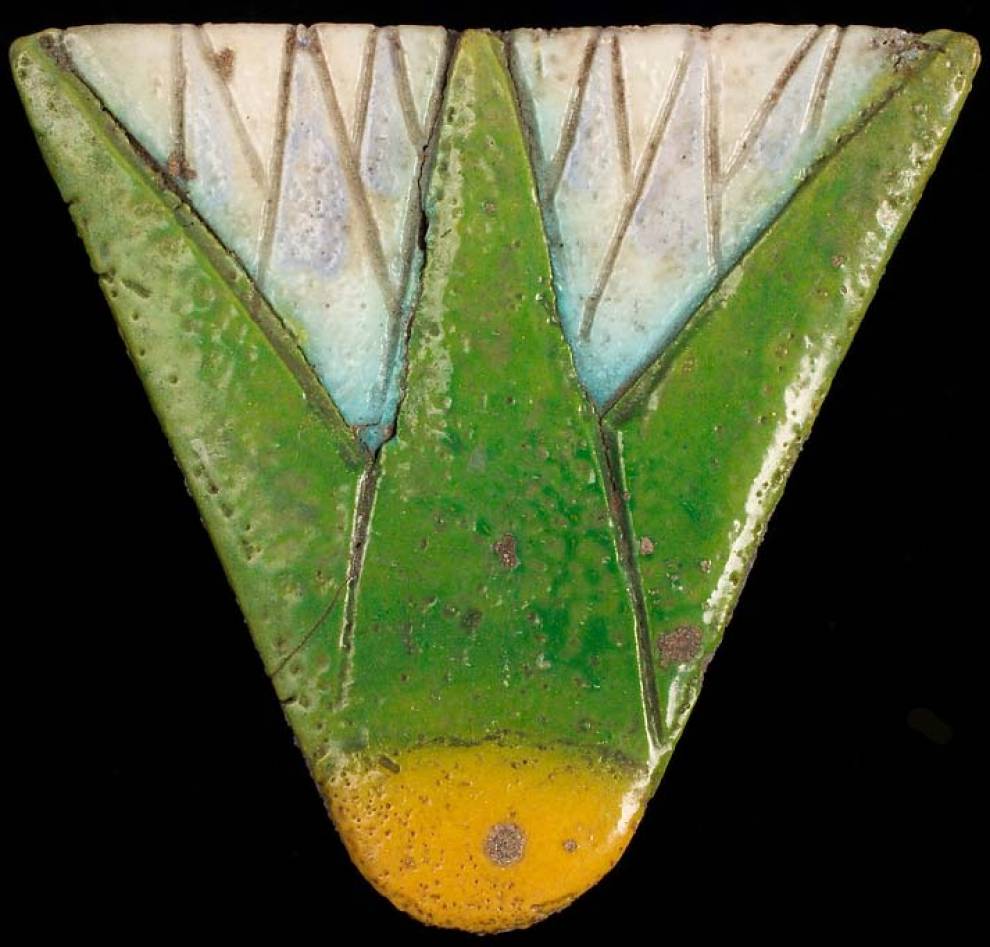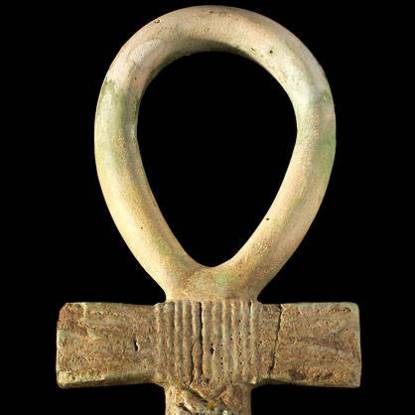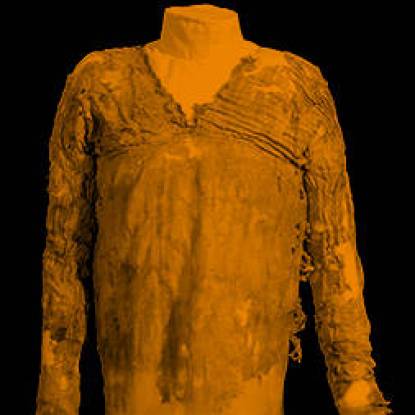Fragments of faience tiles and inlays from Amarna
Amarna is the contemporary name of the capital city of king Akhenaten, founded in his 6th year of rule (about 1350 BC). It is also known as Tell el-Amarna, after el-Till a village near the site, or by Beni Amra, after the local Bedouin.
Amarna is one of the best known sites of Ancient Egypt. The city was created by the 'heretic' pharaoh Akhenaten and his wife Nefertiti. It was also the boyhood home of Tutankhamen. Amarna is itself famous for dazzling decorative and fine arts.

Fragments of faience tiles and inlays from Amarna. Faience is a glazed ceramic created in a similar way to glass. It can be modelled, coloured and then fired to create vibrant objects. The use of multiple colours was characteristic of the New Kingdom and was particularly fashionable in Akhenaten's reign (1352-1336 BC). Amarna produced the most skilled examples.
The Dahshur Lake Tapestry in the Pottery Room also gives an insight into the image world of Amarna and was woven by Sayed Mahmoud (born 1969) at the Ramses Wissa Wassef Art Centre, Saqqara (RWWAC). (Please note: the Dashur Lake Tapestry is temporarily not on display)
Also in the collection is a tapestry by Sayed Mahmoud showing a water scene, with bird-life and marsh plants that would have been familiar to the artisans who decorated the palaces of Amarna (c.1350 BC).
Petrie was the first to excavate Amarna in 1891-2. He was assisted by Howard Carter, who became famous for discovering the tomb of Tutankhamen, Akhenaten's young successor. Since 1975 the archaeologist Barry Kemp has led excavations at the site and up to date information is on the Amarna Project website.
 Close
Close




